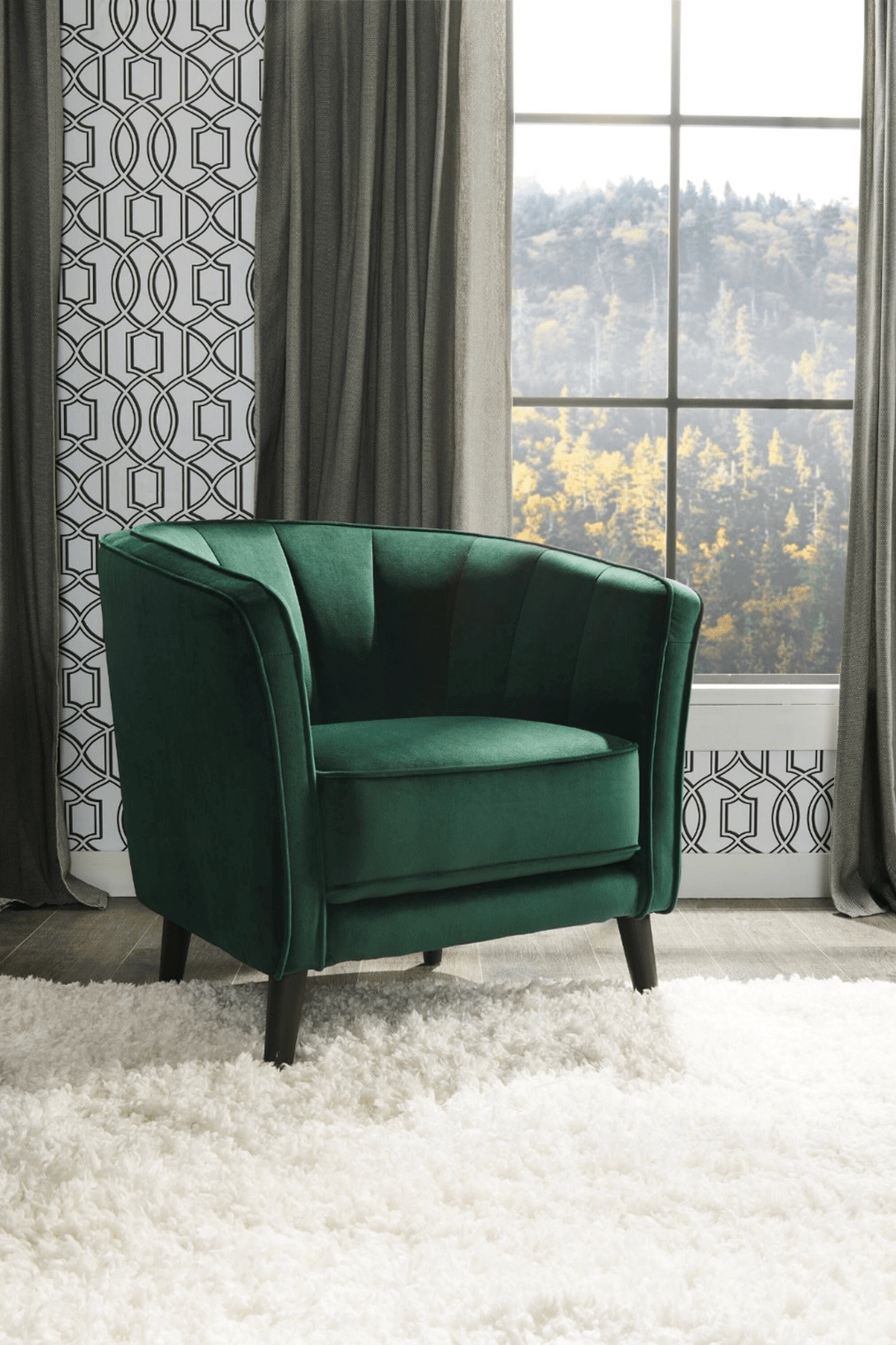As much as we wish to never soil or dirty our upholstery, accidents happen, and it pays to be prepared when they do. Buying upholstered furniture is an investment that will last you for years, and knowing how to care for it will save you time and money down the road. Besides, it lets you curl up on the couch without stressing too much about wear, tear and whether you will spill your coffee on the fabric.
We’ve collected an array of tips and tricks for keeping your upholstery looking and feeling fresh, so you can enjoy your furniture for years to come.

Choose the Right Fabric
The first step of maintaining your upholstered furniture is to choose the right fabric for your needs. A home with pets and children will demand different things from upholstery than a home with only adults, and level of use is important to keep in mind. Considering these things before purchasing will make the task of maintaining your furniture much easier. To learn more, read our article on choosing the right fabric for a busy home.
General Cleaning
To keep your upholstery clean, you should vacuum it often. This helps get rid of dirt, dust and any pet hair, which could lead to a higher rate of wear if left alone. The more often you vacuum, the less dust and dander will gather inside cushions and in crevices, which is especially important if someone in the house has allergies. Most vacuum cleaners have a brush extension or similar attachments for upholstery cleaning, as well as a narrow extension for any nooks and crannies. After vacuuming, take a minute to wipe down any non-fabric areas such as legs, consoles or recliner buttons.
Protect Your Fabric
Get ahead of the curve and save your upholstered furniture before accidents happen by using a fabric protectant. Spray your fabric sofa, loveseat or chair with a fabric protection spray, which will create an invisible barrier that helps protect against dirt, dust and spills. For leather furniture, consider getting a leather conditioner to prevent the leather from drying and cracking, while also protecting against smudges and stains. Some leather conditioners can even double as a cleaner.

Preserve the Padding
To ensure your cushions maintain their shape over time, without compressing too much in one spot or another, flip and turn the cushions regularly. If possible, swap them around, so you don’t sit on the same cushion every day – that way, the padding gets an even wear and you can avoid dealing with lumps and bumps in your spot of relaxation. This can also help with avoiding wear and bald spots on the fabric.
Another danger for the padding is the overuse of water when cleaning the cushion covers, as this can saturate the padding material and cause permanent damage. Always use water sparingly and carefully when cleaning non-removable covers, and make sure you consult the manufacturer’s instructions if cleaning the padding itself.
Clean Spills
When accidents happen, the key to keeping your upholstered furniture spotless is to clean spills right away. Remember: never rub at a stain. Instead, blot gently with a clean colourfast towel. If the fabric is water-safe, you can add some water or a mild cleaner. Use a soft brush to work the cleaner into the fibers with a circular motion, and vacuum when dry. Always test any products in an inconspicuous area before using.
Know Which Cleaner to Use
Different fabrics demand different care, so make sure you know what type of cleaner to use for your upholstery. Some fabrics can be cleaned with water-soluble cleaners, others with non-water-based cleaners, and others should not be cleaned with liquid at all. Know what type of fabric your furniture is upholstered with and use only appropriate cleaners.
Always remove any excess liquid before cleaning, follow the cleaning agents’ instructions, and blot gently with a clean cloth. This UV3 Upholstery Cleaner is a great choice for various fabrics and materials. To remove ink, grease or lipstick stains from leather, try this UV3 Ink Eraser Stick. Some upholstered furniture can also be steam cleaned, or you can use a dry-cleaning agent. If the fabric is especially delicate and difficult to work with, consider hiring a professional cleaning service.

Keep Away from Sunlight and Pollutants
To avoid the fading of fabrics and colours, try to keep the piece of furniture out of direct sunlight. Silk and other delicate fabrics are especially sensitive to this kind of damage. Do your best to maintain proper ventilation in the area, as airborne pollutants can harm your upholstery. Also, fumes from cooking and unpleasant odours from things like litter boxes are easily absorbed into upholstered furniture and can be tough to get out.
Remove Odours
If your upholstered furniture has picked up an unpleasant scent, it does not necessarily signal that the piece is at the end of its life. To remedy this, remove any washable parts, clean them with an appropriate cleaner according to instructions and let dry. Sprinkle baking soda generously on the seating and backrest, making sure to get into crevices and corners. Leave the baking soda treatment on for anywhere between an hour and a day, depending on the severity of the smell. Afterwards, vacuum the entire piece. Repeat the process if necessary.
Now you are equipped with some essential knowledge on how to best preserve and maintain your upholstered furniture. If you have any specific questions, contact one of our Brick stores or chat with us online. Any time you buy furniture from The Brick, you can add our 5 Year Furniture Protection Plan to your purchase. This protection plan provides long term coverage at an affordable price, so you can spend less time stressing and more time enjoying your new upholstery items.




